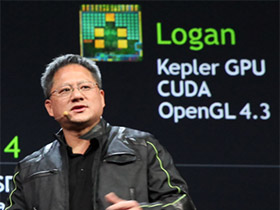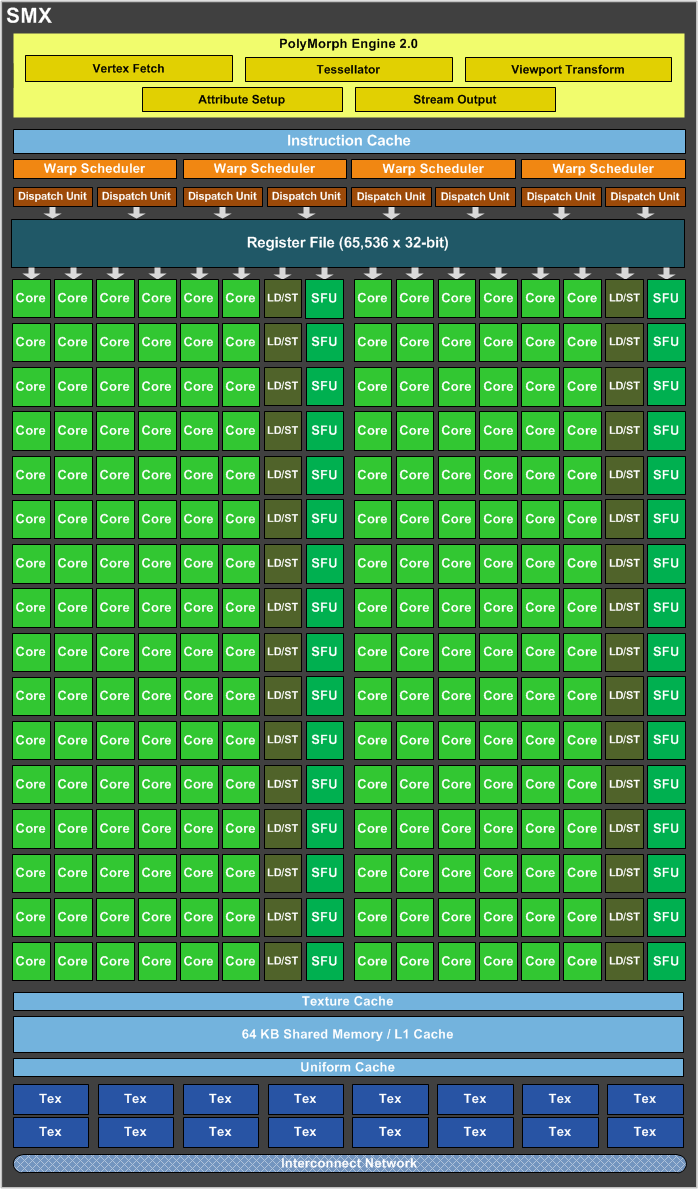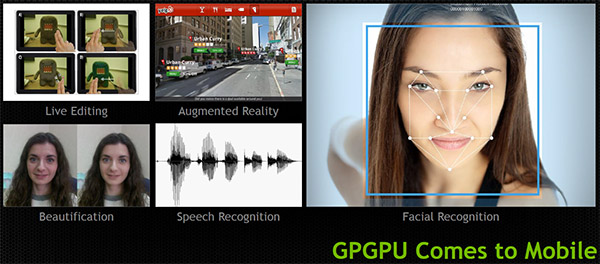Nvidia's Kepler Architecture: Coming To An SoC Near You
We're still waiting for the first Tegra 4-based device (Nvidia's Shield) to officially launch, but the company is already talking about the Kepler-based GPU in its next-generation Tesla SoC. Is the company planning to license this technology out?
Nvidia’s big news at this year’s SIGGRAPH in Anaheim, California is that the GPU you’ll find inside Project Logan (its next-gen Tegra) and perhaps in other SoCs, given a recent interest in licensing, is up and running, based on the company’s Kepler architecture.
Of course, this isn’t a completely unexpected revelation—Jen-Hsun spelled out the Tegra roadmap a few months ago at GTC, making it clear that Logan’s graphics component would be Kepler-based. Consistent with his announcement, company representatives maintain that Logan will ship in early 2014.
We do get some additional specifics, though. I asked Nvidia’s Matt Wuebbling about the composition of what it’s calling Mobile Kepler, and he replied that it’ll comprise a single SMX. That means we’ll be looking at 192 CUDA cores, 16 texture units, and, presumably 64 KB of L1.
According to Wuebbling, Mobile Kepler will use one-third the power of Imagination Technology's PowerVR SGX554MP4, at the heart of Apple’s A6X SoC, in an unspecified rendering workload. Nvidia’s using a 2 W figure to describe Mobile Kepler, comparing it to GeForce GTX Titan’s 250 W maximum TDP. Those are interesting claims, since Nvidia earlier specified that it was able to achieve better power efficiency from separate vertex and pixel shaders in Tegra 4 than a unified shader design allowed (for comparison, Tegra 4 sports 24 vertex and 48 pixel shaders).
Nvidia's team on the ground at SIGGRAPH gave us a demonstration of Mobile Kepler dialed back to the performance of Apple's fourth-gen iPad, illustrating the difference in power consumption through measuring the graphics rail of each system. You can see this in action below:
On the flip side, adopting the Mobile Kepler architecture enables support for APIs currently not available on Tegra 4's NV40-class architecture, such as OpenGL ES 3.0, OpenGL 4.4, DirectX 11, OpenCL, and CUDA 5.0. When Nvidia introduced Tegra 4, it shrugged off the lack of OpenGL ES 3.0 support by saying there wouldn’t be much content any time soon due to developers’ propensity for targeting the lowest common denominator of mobile devices. It’ll be interesting to see if that story changes in less than one year.
Should you hold off on Tegra 4-based devices like HP’s 21” Slate All-In-One due to today’s demonstration? Nvidia says no, naturally.
Get Tom's Hardware's best news and in-depth reviews, straight to your inbox.
-
waikano The Mobile Market just got my attention...although I have an Gen1 iPad and the family uses the thing all the time, this bit of info could be the needle I have been looking for.Reply -
waikano The Mobile Market just got my attention...although I have an Gen1 iPad and the family uses the thing all the time, this bit of info could be the needle I have been looking for.Reply -
Mike Friesen Why couldn't canonical put THIS in thier ubuntu edge! Then I would buy it guaranteed.Reply -
fulle Will Mobile Kepler be the GPU that will turn things around for Nvidia, and allow them to finally beat PowerVR and Qualcomm, who have been totally kicking their butt?Reply
Who knows? But one thing is for certain! Tegra 4 will only enjoy about a month of competing against PowerVR Series 5 stuff, before Rogue drops. Then it's back to getting stomped on for Nvidia until mobile Kepler is ready. They better hurry it up! -
antilycus Nvidia innovates and engineers. Everyone else (AMD, Matrox, etc) copy NVidia's tech. I love my Tegra 3, but I am worried that mobile chipsets are going to have less than a 1 year life span. Tegra 4 owners are going to get burned when Kepler releases on tablets. Also notice in above video... it's no in a tablet form yet.Reply -
knowom Nvidia should use "Shield" and Logan for gaming, but also for developers using Maya and 3 studio max and Photoshop along with basic webdesign as well. Mobile touch screens could serve to be very intuitive for much of that stuff in terms of pinching and zooming.Reply -
breakingadam This is actually quite upsetting. I was about to pre-order a Shield on Friday (as it fits my needs as an owner of a high end gaming PC). Now, I'm probably not going to as Tegra 4 will be completely blown out of the water by the mobile Kepler within less than a year. Not sure why Nvidia would start hyping this (yet to be released) chip, when the Tegra 4 has not even hit shelves yet. Although a gen 2 Shield MAY not even happen, I'm really hesitant now to buy the Shield. Big misstep by Nvidia IMO. So many people sceptical on the Shield and it's value... Now, potential buyers have one more reason to be even more sceptical as it will be obsolete/outdone after only one year.Reply -
somebodyspecial Every mobile chip is outdone in a year. Get over it. S800 will be absolutely squashed by S1000 (or whatever they call it next Aug when it comes). Kepler mobile buyers will be burned a year later by maxwell mobile...So what. The same happens to a degree in gpus each year (but more so on a die shrink year). This is just reality for anyone buying tech. Your tech today will be crushed next year by the same maker of that tech (never mind every one else...) or they are not doing their engineering jobs. I'm looking at you INTEL...I waited for haswell, and waited for almost nothing but a hot chip with a gpu I have no interest in - those transistors are wasted on me and would rather have them dedicated to a 40-50% jump in cpu power vs some dumb gpu.Reply
Rogue hasn't bragged one bit yet about perf, only features. T4 will have a dominant cpu for a while, and only S800 will challenge it this year. It will take 4-6 months for a device to hit AFTER the day rogue ships. Imagination won't be in anything major but apple I'd guess this year. Also note they don't make any money and had to borrow 20mil just to pay for 100mil company mips. So they aren't swimming in dev money. Their party is over now that bigger fish have joined the race and now that gaming is the most important thing. Imagination was forced out of the desktop by NV/AMD just like Intel was. I believe the same is about to happen on mobile.
NV/AMD will have an advantage from this point forward as they have 20yrs of driver experience, game experience and devs know their hardware inside out and both will be putting their desktop chips in socs as they shrink them to make it inside one (this article is evidence of that, note the feature list now as that happens just vaulted ahead). Of course AMD has to last that long to get into a soc :) Low teens for margins on xbox1/ps4 mean it won't be getting rich on consoles any time soon. Wisely I guess, NV passed and probably laughed at MS/Sony's pitch of low teen margins.
Let me know when rogue hits a device other than Apple's.



